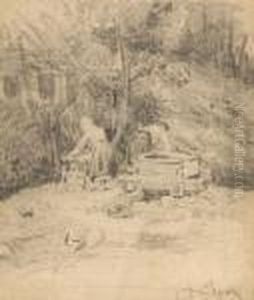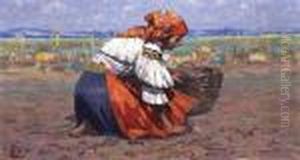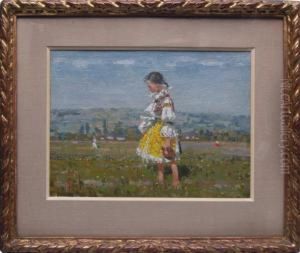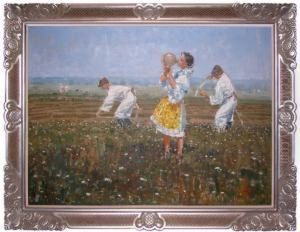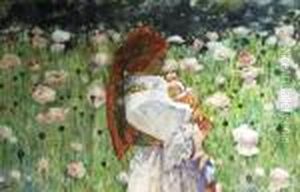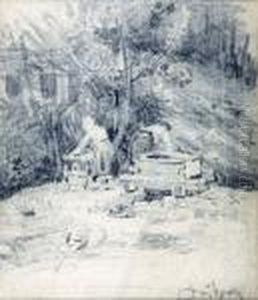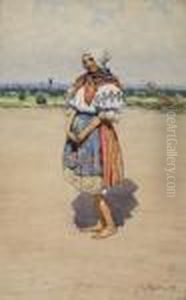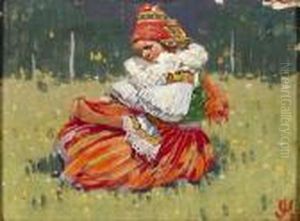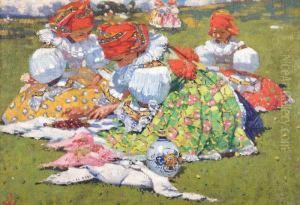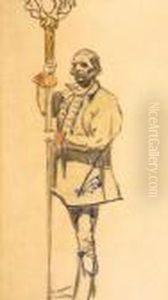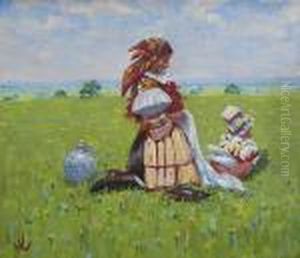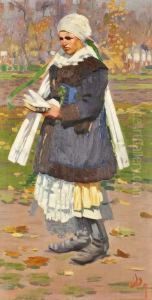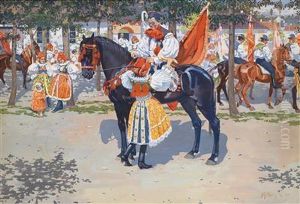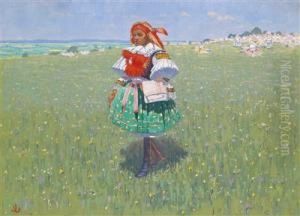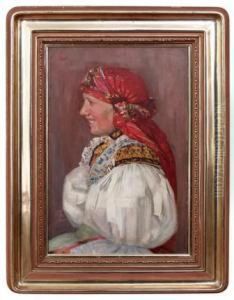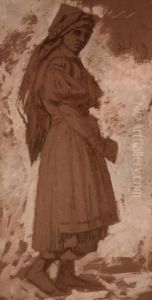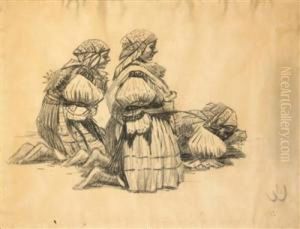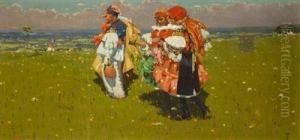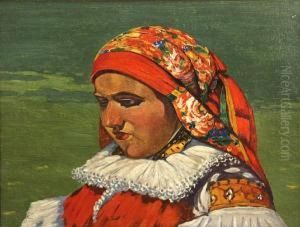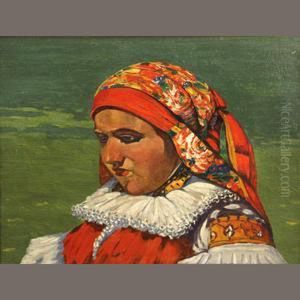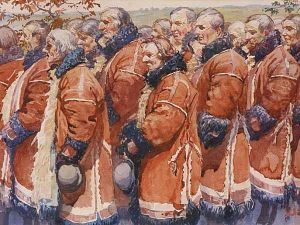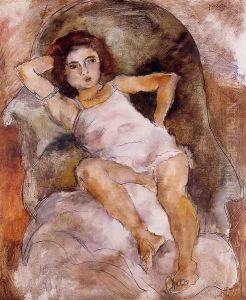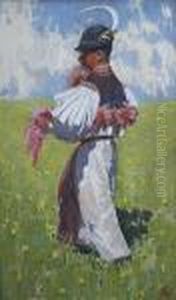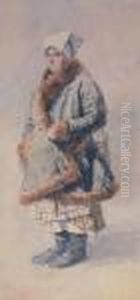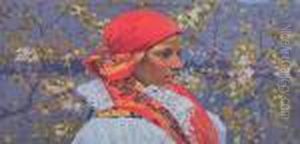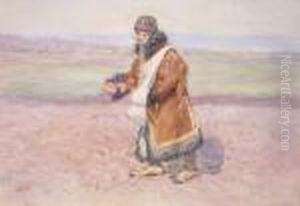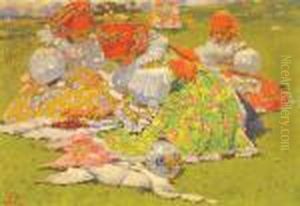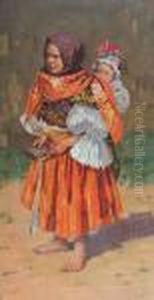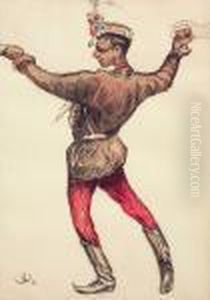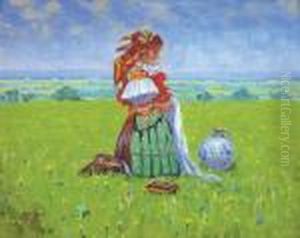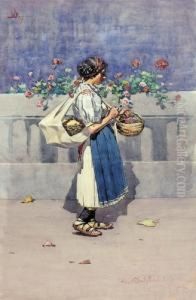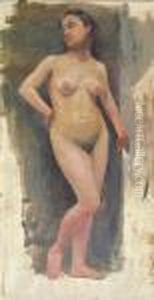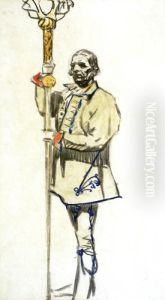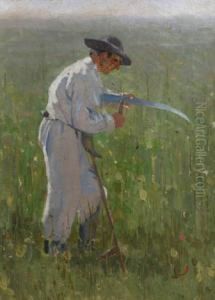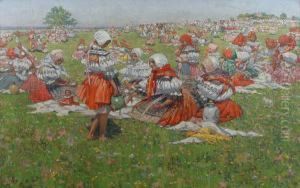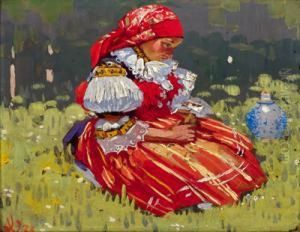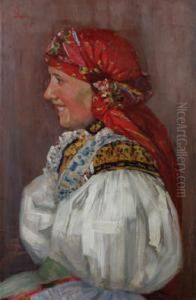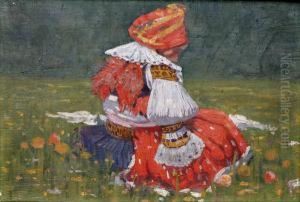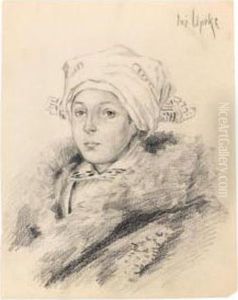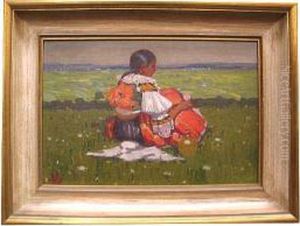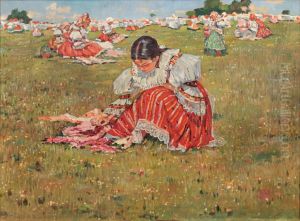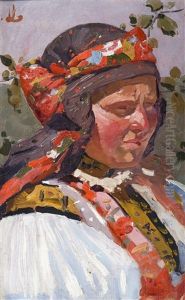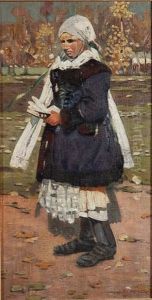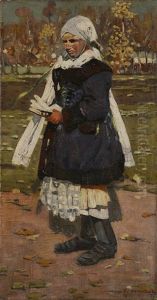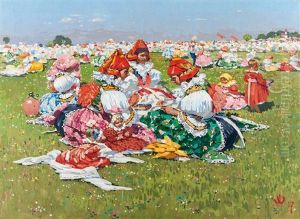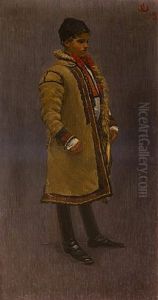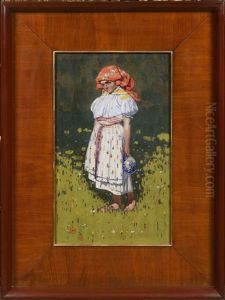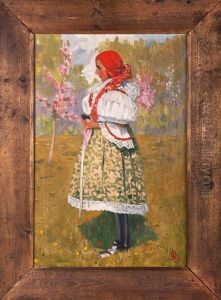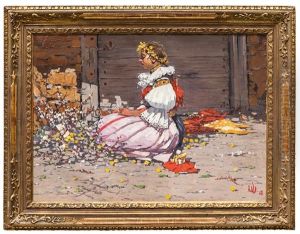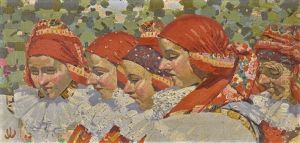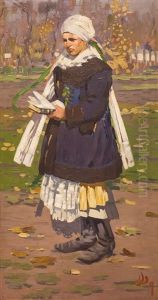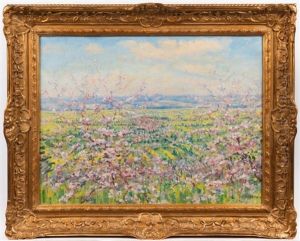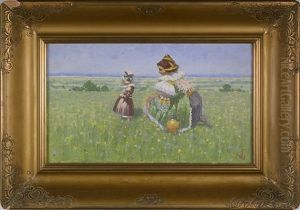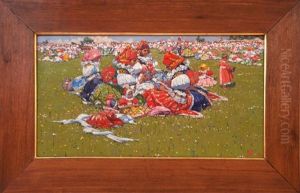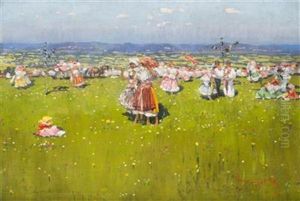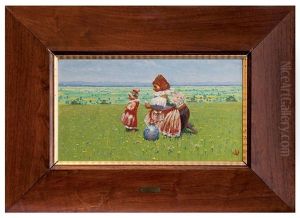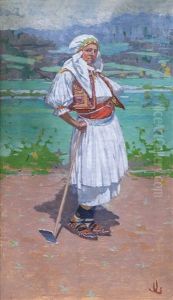Joza Uprka Paintings
Joža Uprka was a Moravian painter, graphic artist, and illustrator primarily known for his depictions of the folk life and traditions of the Moravian Slovakia region. Born on October 24, 1861, in Kněždub, Moravia, then part of the Austro-Hungarian Empire, Uprka developed an early interest in the arts and the rich cultural heritage of his native region.
Uprka studied at the Academy of Fine Arts in Munich, Germany, where he was influenced by the naturalist and genre painting traditions. After his studies, he returned to Moravia and devoted himself to capturing the customs, festivals, costumes, and daily life of the Moravian Slovak people. His work is characterized by vibrant colors, dynamic compositions, and a deep affection for the rural lifestyle that was rapidly changing at the turn of the 20th century.
Throughout his career, Uprka collaborated with ethnographers and became an important figure in the promotion and preservation of Moravian Slovak folk culture. He was also active in local cultural life, supporting the development of regional museums and participating in the establishment of cultural institutions.
Uprka's paintings are not only valuable for their artistic quality but also as historical documents that offer insight into the ethnographic details of the period. His dedication to the subject matter earned him recognition as a leading Moravian artist of his time.
During World War I, Uprka's work took on a more somber tone, reflecting the hardships and the impact of the conflict on his homeland. Nevertheless, he continued to produce art that celebrated the resilience and spirit of his people.
Joža Uprka passed away on July 12, 1940, in Hroznová Lhota, Moravia. His legacy lives on through his art, which remains an important part of Moravian cultural history and continues to be celebrated for its unique portrayal of the folk traditions of Moravian Slovakia.

